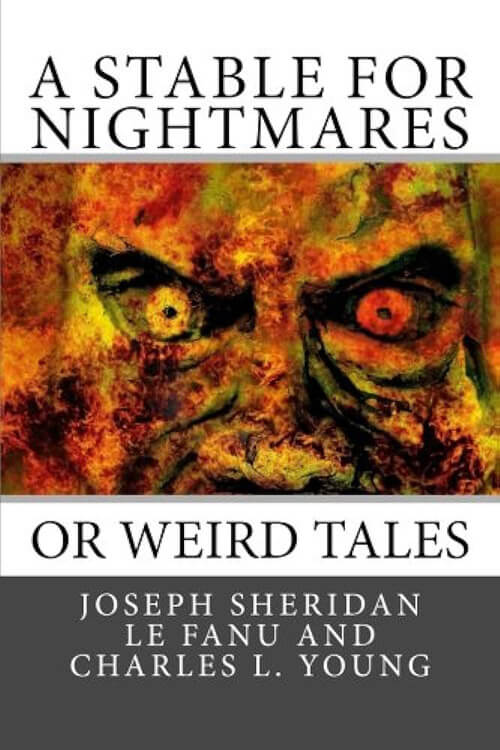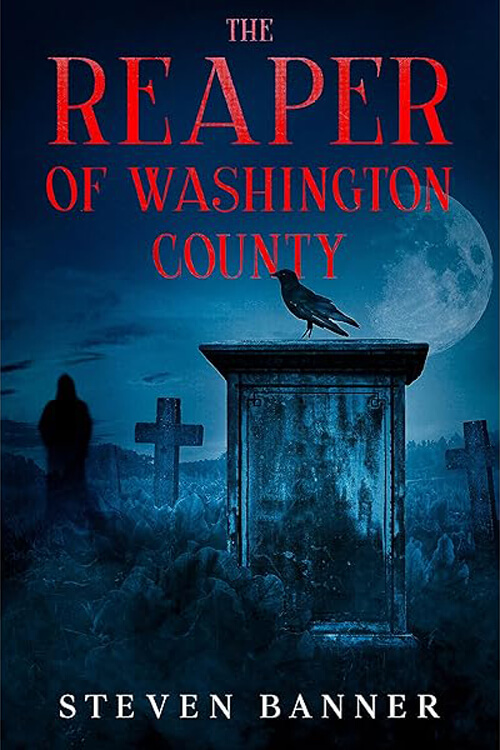
A Stable for Nightmares
I paid my reckoning and resumed my journey, well pleased with the good cheer of that old-world inn but a little disappointed.
We had been driving for more than an hour when we began to cross a wild common, and I knew that this passed, a quarter of an hour would bring me to the door of Barwyke Hall.
The peat and furze were soon left behind; we were again in the wooded scenery that I enjoyed so much, so entirely natural and pretty, and so little disturbed by traffic of any kind. I was looking from the chaise window and soon detected the object my eye had been searching for for some time. Barwyke Hall was a large, quaint house of that cage-work fashion known as “black-and-white,” in which the bars and angles of an oak framework contrast, black as ebony, with the white plaster that overspreads the masonry built into its crevices. This steep-roofed Elizabethan house stood amid park-like grounds of no great extent but rendered imposing by the noble stature of the old trees that now cast their lengthening shadows eastward over the turf from the declining sun.
The park wall was grey with age and, in many places, laden with ivy. In a deep grey shadow, which contrasted with the dim fires of the evening reflected on the foliage above it, in a gentle hollow, stretched a lake that looked cold and black and seemed, as it were, to skulk from observation with guilty knowledge.
I had forgotten that there was a lake at Barwyke, but the moment this caught my eye, like the cold polish of a snake in the shadow, my instinct seemed to recognize something dangerous. I knew that the lake was connected, but I could not remember how, with the story, I had heard of this place in my boyhood.
I drove up a grass-grown avenue under the boughs of these noble trees, whose foliage, dyed in autumnal red and yellow, gorgeously returned the beams of the western sun.
We drew up at the door. I got out and had a good look at the front of the house; it was a large and melancholy mansion, with signs of long neglect upon it; great wooden shutters, in the old fashion, were barred, outside, across the windows; grass, and even nettles, were growing thick on the courtyard, and a thin moss streaked the timber beams
Read or download Book
Joseph Sheridan Le Fanu
Joseph Thomas Sheridan Le Fanu (28 August 1814 – 7 February 1873) was an Irish writer of Gothic tales, mystery novels, and horror fiction.
Biography.
He was a leading ghost story writer of his time, central to the genre’s development in the Victorian era. M. R. James described Le Fanu as “absolutely in the first rank as a writer of ghost stories”. Three of his best-known works are the locked-room mystery Uncle Silas, the lesbian vampire novella Carmilla, and the historical novel The House by the Churchyard.
Work
Le Fanu worked in many genres but remains best known for his horror fiction. He was a meticulous craftsman and frequently reworked plots and ideas from his earlier writing in subsequent pieces. Many of his novels, for example, are expansions and refinements of earlier short stories. He specialized in tone and effect rather than “shock horror” and liked to leave important details unexplained and mysterious. He avoided overt supernatural effects: the paranormal is strongly implied in most of his significant works, but a “natural” explanation is also possible. The demonic monkey in “Green Tea” could be a delusion of the story’s protagonist, who is the only person to see it; in “The Familiar”, Captain Barton’s death seems to be supernatural but is not witnessed, and the ghostly owl may be a real bird. This technique influenced later horror artists, both in print and on film (see, for example, the film producer Val Lewton’s principle of “indirect horror”). Though other writers have since chosen less subtle techniques, Le Fanu’s finest tales, such as the vampire novella Carmilla and the short story “Schalken the Painter”, remain some of the most powerful in the genre. He had an enormous influence on one of the 20th century’s most influential ghost story writers, M. R. James, and although his work fell out of favour in the early part of the 20th century, towards the end of the century, interest in his work increased and remains comparatively strong.
The Purcell Papers
His earliest twelve short stories, written between 1838 and 1840, are the literary remains of an 18th-century Catholic priest called Father Purcell. They were published in the Dublin University Magazine and were later collected as The Purcell Papers (1880). They are primarily set in Ireland and include some classic stories of gothic horror, with gloomy castles, supernatural visitations from beyond the grave, madness, and suicide.






